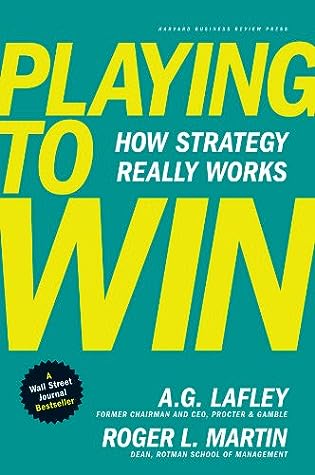More on this book
Community
Kindle Notes & Highlights
By identifying the capabilities required to achieve competitive advantage, the firm can apply resources, attention, and time to the things that matter most.
Don’t obsess about whether something is a core capability or a supporting activity; try your best to capture the most important activities required to deliver on your where-to-play and how-to-win choices.
Don’t settle for a generic activity system; work to create a distinctive system that reflects the choices you’ve made.
Do keep the whole company in mind, looking for reinforcing rods that are strong and versatile enough to run through multiple layers of activity systems and keep the company aligned.
Do be honest about the state of your capabilities, asking what will be required to keep and attain the capabilities you require.
Unfortunately, the management teams had been trained over decades to see strategy reviews as anything but an opportunity to share ideas.
Only when the choices are clear and simple can they be acted upon—only then can they effectively shape choices throughout the rest of the organization.
Do think about clarity and simplicity when communicating key strategic choices to the organization. To get at the core, don’t overcomplicate things.
Do define measures that will tell you, over the short and long run, how you are performing relative to your strategic choices.
Ultimately, there are four dimensions you need to think about to choose where to play and how to win: The industry. What is the structure of your industry and the attractiveness of its segments? Customers. What do your channel and end customers value? Relative position. How does your company fare, and how could it fare, relative to the competition? Competition. What will your competition do in reaction to your chosen course of action?
Don’t expect either the channel or the end consumers to tell you what constitutes value; that is your job to figure out.
Don’t spend a lot of time up front analyzing everything you can; instead, use reverse engineering to pinpoint only what you really need to know.
Do explore a wide range of where-to-play and how-to-win possibilities, rather than narrowing the list early on to those that feel realistic; unexpected possibilities often have interesting and helpful elements that can otherwise be dismissed out of hand. Learn from them.
Do encourage skeptics to express concerns at the specify-barriers stage; have them articulate the precise nature of their concerns about specific conditions.
For your own company, ask (and honestly answer): Have you defined winning, and are you crystal clear about your winning aspiration? Have you decided where you can play to win (and just as decisively where you will not play)? Have you determined how, specifically, you will win where you choose to play? Have you pinpointed and built your core capabilities in such a way that they enable your where-to-play and how-to-win choices? Do your management systems and key measures support your other four strategic choices?
Here are six of the most common strategy traps: The do-it-all strategy: failing to make choices, and making everything a priority. Remember, strategy is choice. The Don Quixote strategy: attacking competitive “walled cities” or taking on the strongest competitor first, head-to-head. Remember, where to play is your choice. Pick somewhere you can have a chance to win. The Waterloo strategy: starting wars on multiple fronts with multiple competitors at the same time. No company can do everything well. If you try to do so, you will do everything weakly. The something-for-everyone strategy:
...more
Look for these, for your own business and among your competitors. An activity system that looks different from any competitor’s system. It means you are attempting to deliver value in a distinctive way. Customers who absolutely adore you, and noncustomers who can’t see why anybody would buy from you. This means you have been choiceful. Competitors who make a good profit doing what they are doing. It means your strategy has left where-to-play and how-to-win choices for competitors, who don’t need to attack the heart of your market to survive. More resources to spend on an ongoing basis than
...more
In the case of a unique offering, the firm needs to differentiate in a way that the customer values sufficiently to pay a price premium, enabling the firm to earn an attractive return.
So firms can always choose to win as either a cost leader or a differentiator.


